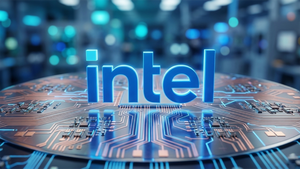
The global semiconductor industry, the bedrock of modern technology and the engine of artificial intelligence, is currently in the throes of an unprecedented geopolitical realignment. As of early November 2025, a complex interplay of national security imperatives, economic competition, and strategic policy shifts—most notably from the United States and China—is fundamentally reshaping the global chip supply chain. This dynamic landscape, characterized by escalating export controls, resource nationalism, and a fervent drive for technological sovereignty, is sending ripple effects across critical industries, with the automotive sector facing immediate and profound challenges.
The long-standing model of a hyper-globalized, efficiency-optimized chip supply chain is giving way to a more fragmented, security-centric regionalization. This transformation is not merely a recalibration of trade routes; it represents a foundational shift in global power dynamics, where control over advanced silicon is increasingly equated with national security and AI supremacy. Recent developments, including China's tightening of rare earth export policies and a diplomatic resolution to a critical automotive chip crisis involving Nexperia, underscore the volatility and strategic importance of this unfolding "chip war."
Unpacking China's Strategic Chip Policies and Their Technical Echoes
China's recent chip export policies, as of November 3, 2025, illustrate a strategic hardening coupled with tactical flexibility in the face of international pressure. A pivotal move occurred on October 9, 2025, when China's Ministry of Commerce (MOFCOM) significantly broadened and strengthened export controls across the rare earth, lithium battery, and superhard materials industries. For the first time, MOFCOM asserted extraterritorial jurisdiction through a "50% Rule," requiring foreign entities to obtain licenses for exporting certain controlled rare earth elements between non-Chinese countries if Chinese entities hold a majority stake in the subsidiary. This mirrors U.S. export control frameworks and signals China's intent to exert global leverage over critical materials. The tightening specifically targets rare earth elements used in logic chips of 14 nanometers (nm) or below and memory chips of 256 layers or more, along with related production equipment.
This aggressive posture, however, was partially tempered by a significant development on November 1, 2025. Following high-level diplomatic engagements, including a reported one-year tariff truce between U.S. President Donald Trump and Chinese President Xi Jinping in South Korea, China announced a conditional exemption for certain orders from the chip manufacturer Nexperia from a recently imposed export ban. The Nexperia crisis, which originated in late September when the Dutch government effectively seized control of the Dutch-headquartered chipmaker (owned by China's Wingtech Technology) citing national security concerns, had threatened to halt production for major European automakers like Volkswagen. The initial ban had affected finished semiconductor products, particularly "automotive computer chips" critical for various vehicle functions, with Nexperia reportedly supplying 40% of the market segment for transistors and diodes in the automotive sector.
These policies represent a marked departure from China's previous, more economically focused approach to semiconductor development. While the "Made in China 2025" initiative has long emphasized self-sufficiency, the October 2025 measures signal a more direct and expansive use of export controls as a retaliatory and protective tool, extending their reach beyond domestic borders. This contrasts with the U.S. strategy, which, since October 2022, has progressively shifted from merely slowing China's technological progress to actively degrading its peak capabilities in advanced AI chips and manufacturing, targeting products, equipment, software, and human capital. The initial reactions from the tech community reflect a mix of relief over the Nexperia exemption, but also deep concern over increased market fragmentation, rising costs, and a potential slowdown in global innovation due to these escalating trade tensions. Experts also acknowledge China's rapid progress in domestic chip production and AI accelerators, with companies already developing "China-compliant" versions of AI chips.
Corporate Crossroads: Navigating the Geopolitical Chip Maze
The reverberations of these geopolitical maneuvers are acutely felt across the corporate landscape, forcing strategic reassessments from automotive giants to leading AI chip developers.
The automotive industry stands as one of the most vulnerable sectors, given its immense reliance on a diverse array of semiconductors. The Nexperia crisis, for instance, brought companies like Volkswagen AG (FWB: VOW) to the brink, with the German automaker explicitly warning in October 2025 that its annual profit targets were at risk due to potential production outages from the export restrictions. Similarly, General Motors Co. (NYSE: GM) CEO Mary Barra acknowledged the potential for production impacts, with teams "working around the clock" to minimize disruptions in a "very fluid" situation. Tesla, Inc. (NASDAQ: TSLA), heavily dependent on China's semiconductor supply base, faces significant exposure, with over 30% of its revenues contingent on the region and its Shanghai Gigafactory relies heavily on the Chinese chip supply chain. Any sustained disruption could lead to production delays and increased costs. Conversely, Chinese automakers like BYD Co. Ltd. (HKG: 1211) are strategically positioned to benefit from Beijing's push for chip self-reliance, with some aiming for vehicles with 100% domestically produced chips as early as 2026, reducing their vulnerability to foreign export controls.
For major AI labs and tech companies, the landscape is equally volatile. Nvidia Corp. (NASDAQ: NVDA) and Advanced Micro Devices, Inc. (NASDAQ: AMD) have navigated a complex environment of shifting U.S. export policies. While earlier restrictions led to substantial financial write-downs, a reported easing in August 2025 allowed Nvidia to resume shipments of its H20 processors and AMD its MI308 chip to China, albeit sometimes with revenue concessions. However, in a renewed tightening on November 3, 2025, President Trump announced that Nvidia's most advanced Blackwell AI chips would be reserved exclusively for U.S. companies, potentially impacting deals with allies. Conversely, China agreed to terminate antitrust investigations into U.S. chip companies, including Nvidia and Qualcomm Inc. (NASDAQ: QCOM), as part of the broader trade deal. This divergence creates a bifurcated logistics environment, forcing companies to develop "tiered hardware" designed to comply with varying export restrictions for different markets, adding complexity but allowing continued market access.
The broader implications include widespread production delays and potential price increases for consumers. Companies are aggressively pursuing supply chain resilience through diversification, exploring "China+1" strategies (e.g., manufacturing in Southeast Asia) and investing in domestic production capabilities, as seen with the U.S. CHIPS and Science Act and the EU Chips Act. This shift will favor companies with diversified sourcing and regionalized production, potentially disrupting existing market positions. Startups, with their typically less robust supply chains, are particularly vulnerable to sudden policy changes, facing existential threats if critical components become unobtainable or prohibitively expensive, hindering their ability to bring new products to market or scale existing ones. The ongoing strategic decoupling is accelerating the development of distinct technology ecosystems, creating a complex and challenging environment for all players.
The Broader Canvas: AI, National Security, and a Fragmented Future
The geopolitical machinations within the chip supply chain are not merely trade disputes; they are the defining struggle for the future of artificial intelligence, national security, and the very structure of the global technological order. This "silicon arms race" profoundly impacts technological innovation, economic stability, and the potential for global collaboration.
For the broader AI landscape, advanced semiconductors are the indisputable "lifeblood," essential for training and deploying increasingly complex models. The drive for national self-sufficiency in chip production is inextricably linked to achieving "AI supremacy" and technological sovereignty. While the intensified competition and massive investments in foundry capacity (e.g., by Taiwan Semiconductor Manufacturing Company Limited (NYSE: TSM), Intel Corporation (NASDAQ: INTC), and Samsung Electronics Co., Ltd. (KRX: 005930)) are accelerating AI development, the U.S. strategy of restricting China's access to cutting-edge AI chips is explicitly designed to impede its rival's ability to develop advanced AI systems, particularly those with military applications. This has, paradoxically, catalyzed China's indigenous innovation, stimulating significant investments in domestic AI chip R&D and potentially leading to breakthroughs that could rival Western solutions. The long-term trend points towards a more complex and segmented global AI market, where technological prowess and geopolitical alignment are equally influential.
The impacts on technological innovation are dual-edged. While the rivalry fosters new eras of semiconductor innovation, it also risks creating inefficiencies, increasing manufacturing costs, and potentially slowing the overall pace of global technological progress due to reduced collaboration and the development of distinct, potentially incompatible, technological ecosystems. Economically, the reshaping of global supply chains aims for greater resilience, but this transition comes with significant costs, including higher manufacturing expenses and increased complexity. The unpredictability of trade policies further adds to economic instability, forcing companies to constantly re-evaluate sourcing and logistics.
National security concerns are paramount. Advanced semiconductors are foundational for military systems, digital infrastructure, and AI capabilities. The U.S. aims to maintain a decisive technological lead, fearing the potential use of advanced AI in military applications by rivals. The weaponization of supply chains, including critical minerals, highlights national vulnerabilities. Taiwan's dominant role in advanced chip manufacturing makes its stability a critical geopolitical flashpoint, with any conflict having catastrophic global consequences for the AI ecosystem. This environment is also eroding global collaboration, with the U.S. push for "tech decoupling" challenging traditional free trade and risking the fragmentation of the global technology ecosystem into distinct AI hardware and software stacks. This can create interoperability challenges and slow the development of common standards for responsible AI.
Compared to previous technological competitions, the current "chip war" is distinct in its strategic focus on semiconductors as a "choke point" for national security and AI leadership. The comprehensive nature of U.S. controls, targeting not just products but also equipment, software, and human capital, is unprecedented. The COVID-19 pandemic served as a stark lesson, exposing the extreme fragility of concentrated supply chains and accelerating the current shift towards diversification and resilience. The long-term implication is a "technological iron curtain," leading to increased costs, reduced collaboration, but also enhanced regional resilience and new innovation pathways within bifurcated markets.
The Road Ahead: Navigating a Fragmented Future
The trajectory of the global chip supply chain and its impact on AI is set for continued dynamism, characterized by a sustained "AI supercycle" and an accelerating shift towards regionalized technological ecosystems.
In the near-term (2025-2028), intensified geopolitical competition and export controls will persist, particularly between the U.S. and China, forcing companies to meticulously navigate a complex web of regulations. Regionalization and diversification of manufacturing will continue apace, with 18 new fabs slated for construction in 2025, aiming to bolster domestic production and foster "split-shoring." Advanced packaging technologies will become increasingly crucial for enhancing chip performance and energy efficiency, driven by AI computing demands. Despite these efforts, persistent supply chain volatility is expected due to complex regulations, raw material shortages, and the concentrated nature of advanced node manufacturing. The demand for AI chips, especially bleeding-edge fabs and High-Bandwidth Memory (HBM), is projected to cause significant shortages.
Long-term (beyond 2028), distinct technological blocs are expected to fully form, prioritizing technological sovereignty and security over market efficiency. This fragmentation, while potentially increasing costs and slowing global progress, aims to yield a more stable and diversified semiconductor industry, better equipped to withstand future shocks. AI will remain the primary catalyst for semiconductor market growth, potentially driving the industry to a $1 trillion valuation by 2030 and over $2 trillion by 2032, with a focus on optimizing chip architectures for specific AI workloads. Taiwan, despite diversification efforts, is likely to remain a critical hub for the most advanced semiconductor production.
Potential applications and use cases for AI, given these trends, include AI-driven chip design and manufacturing, leveraging generative AI to accelerate material discovery and validate architectures. Ubiquitous AI at the edge will require specialized, low-power, high-performance chips embedded in everything from smartphones to autonomous vehicles. Enhanced AI capabilities will transform critical sectors like healthcare, finance, telecommunications, and military systems. However, significant challenges remain, including ongoing geopolitical conflicts, raw material shortages, the concentration of manufacturing at critical chokepoints, workforce shortages, high capital intensity, and the lack of global regulatory coordination.
Experts predict a continued "AI supercycle," driving unprecedented demand for specialized AI chips. Fragmentation and regionalization will intensify, with companies exploring "friend-shoring" and near-shoring options. The U.S.-China tech rivalry will remain a central force, shaping investment and supply chain strategies. Strategic investments in domestic capabilities across nations will continue, alongside innovation in chip architectures and advanced packaging. The critical need for supply chain visibility and diversification will push companies to adopt advanced data and risk management tools. Technology, especially AI and semiconductors, will remain the primary terrain of global competition, redefining power structures and demanding new thinking in diplomacy and national strategy.
The Enduring Shift: A New Era for AI and Global Commerce
The current geopolitical impact on the global chip supply chain represents a pivotal moment in both economic and AI history. The shift from a purely efficiency-driven, globalized model to one prioritizing resilience and national security is undeniable and enduring. Key takeaways include China's assertive use of export controls as a strategic tool, the automotive industry's acute vulnerability, and the profound implications for AI development, which is increasingly bifurcated along geopolitical lines.
This development signifies the end of a seamlessly integrated global semiconductor supply chain, replaced by regionalized blocs and strategic rivalries. While this transition introduces higher costs and potential inefficiencies, it also fosters innovation within localized ecosystems and builds greater resilience against future shocks. The long-term impact will see the emergence of distinct technological ecosystems and standards, particularly for AI, forcing companies to adapt to bifurcated markets and potentially develop region-specific product offerings.
In the coming weeks and months, observers should closely watch the progress of global fab expansion in the U.S., Japan, and Europe, as well as the fierce competition for leadership in advanced nodes among TSMC, Intel, and Samsung. China's implementation of its stricter export controls on rare earths and other materials, alongside any further diplomatic maneuvering regarding specific chip exports, will be critical indicators. Further adjustments to U.S. policy, including potential new tariffs or changes to export controls, will also significantly impact global trade dynamics. Finally, the flow of investment into AI-related technologies, semiconductor companies, and critical mineral extraction will reveal the true extent of this strategic realignment. The coming period will further solidify the regionalized structure of the semiconductor industry, testing the resilience of new supply chains and shaping the geopolitical competition for AI dominance for decades to come.
This content is intended for informational purposes only and represents analysis of current AI developments.
TokenRing AI delivers enterprise-grade solutions for multi-agent AI workflow orchestration, AI-powered development tools, and seamless remote collaboration platforms.
For more information, visit https://www.tokenring.ai/.







